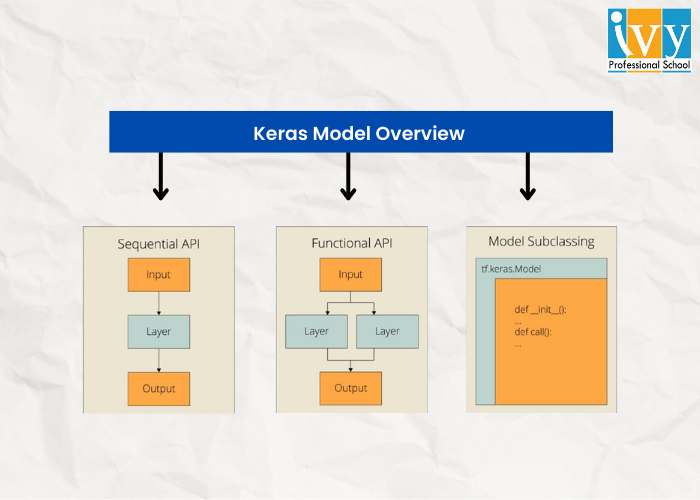Team Sep 17, 2022 No Comments
Keras is an easy-to-use, strong, free open-source Python library for evaluating and developing deep learning frameworks. This is a part of the TensorFlow library and enables you to illustrate and train neural network structures in just some lines of code. In this article, we will be talking about what is Keras and TensorFlow.
Let us start this Keras tutorial. Keras was formulated to be quite user-friendly, easy to extend, modular, and to work with Python. The API was “designed for human beings, not machines” and “follows best practices for reducing cognitive load.”
Neural layers, optimizers, cost operations, activation operations, initialization schemes, and regularization schemes are all standalone structures that one can combine to formulate a new module. New modules are easy to add, as new functions and classes. Models are illustrated in Python code, not different structure configuration models.
In this article on what is Keras in Python, let us have a look at the key features of Keras:
Being a high-level library and is a convenient interface, Kears certainly boosts as one of the deep learning libraries that is available. There are several features of itself, which makes it more convenient to use and also offers more features.
– If Keras is compared with and Theano, it tries to offer a better “user Experience” and this zones Keras above the other two libraries.
– As this is a Python library, it is more available to the general public because of the inherent simplicity of the Python programming language.
– Lasagne is a library that is very similar to Kears. But using both the libraries I can say Keras is much more convenient.
Now that you know the advantages of using the Keras library, you should also be aware of the disadvantages of Kears.
– Since this Python library has its dependency on low-level languages such as TensorFlow and Theano, so this performs as a double-edged sword for Keras. This is the primary reason why Keras cannot move beyond the realms of these libraries. For instance, both TensorFlow and Theano presently do not support GPUs except Nvidia. That is the reason Keras also does not have the corresponding support.
– Similar to Lasagne, eras also wholly abstract the low, level languages. So this is less flexible when it comes to creating custom functions.
– The final point is that this is new in this niche. Its very first version was launched in late 2015, and it has gone through various alterations since then. Then even though Keras is already used in the process of production, one should always think twice before they deploy Keras models for production.

Models are the primary entity one will be working with when using Keras. The structures are used in defining TensorFlow neural networks by mentioning the attributes, operations, and layers you wish.
Keras provides a range of APIs you can employ to illustrate your neural network, involving:
– Sequential API allows one to formulate a model structure by structure for most issues. It is straightforward but restricted to single-input, single-output stacks of layers.
– Functional API is mainly a full-feature API that supports arbitrary framework architecture. It is more complicated and flexible in comparison to the sequential API.
– Model Subclassing allows one to enact everything from scratch. Ideal for research and highly complicated use scenarios, but it is hardly used in practice.
ML (Machine Learning) algorithms use a special form of an algorithm that is known as a Neural Network. Same as every machine learning algorithm, it also abides by the general ML workflow of data preprocessing and model evaluation. For ease of use, here are some of the to-dos on how to approach a Neural Network problem.
– See if there are issues where a neural network offers you an uplift over traditional algorithms.
– Conduct a survey for which neural network architecture is the most ideal required issue.
– Illustrate neural network architecture via language or library as per your choice.
– Change data into the ideal format and divide it into varied batches.
– As per your requirements, pre-process the data.
– Augmented data is utilized to magnify size and make better-trained frameworks.
– Batches are nourished by the neural network.
– Track alterations in training and validation data sets, and also train them.
– Test your frameworks.
After this article on what is Keras model, you come to know about how this is useful in the area of deep learning along with its benefits and also limitations. We have also seen how this Python library depends on low-level languages such as Theanos and TensorFlow. Also if you were wondering what is Keras vs TensorFlow, then you must have got your answer.
Career prospects in data science and data analytics have increased over time and this has become a much-acclaimed niche presently. If you wish to start your career in data science then there can be no better place than Ivy Professional School. It offers a complete course on data science conducted by industry experts. For more details, you can visit their website.
Leave a Reply